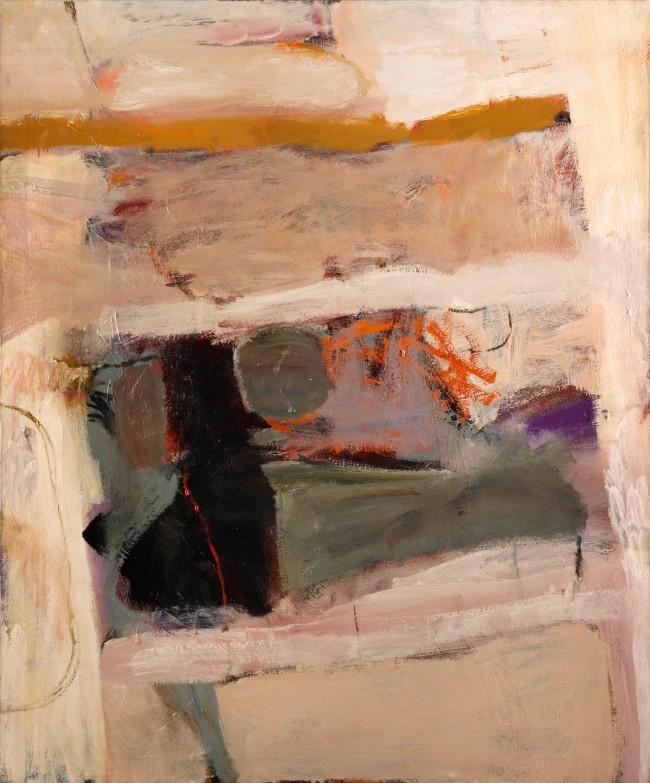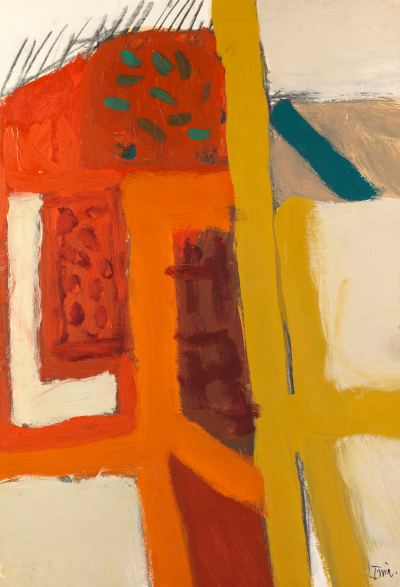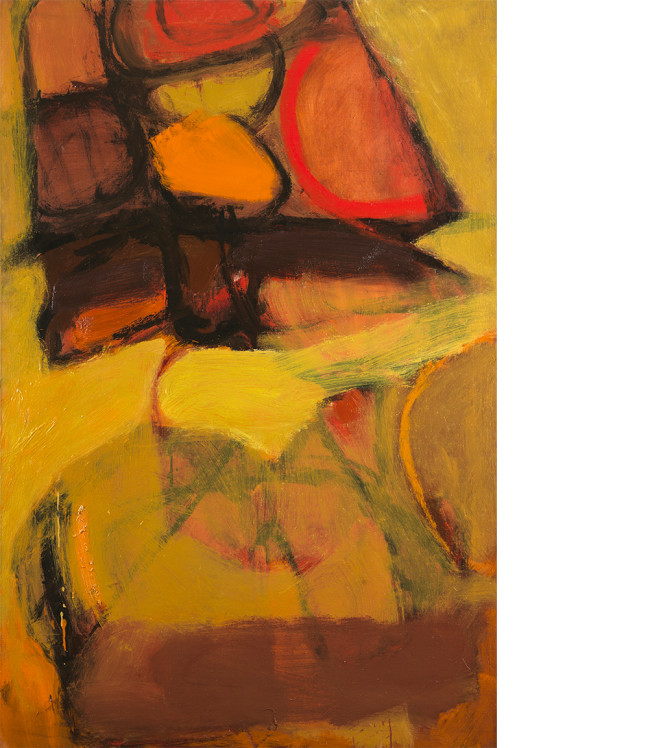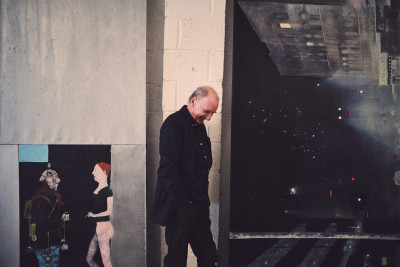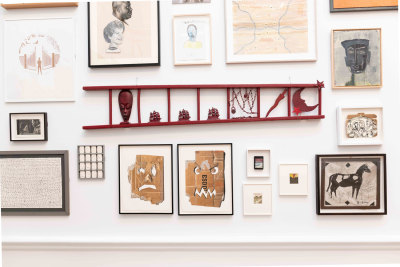“Like a bomb going off”: how Albert Irvin found abstraction
“Like a bomb going off”: how Albert Irvin found abstraction
By Sam Phillips
Published 3 November 2017
In the 1950s when British painter Albert Irvin RA caught a glimpse of the explosive New York Abstract Expressionism scene, he abandoned his still-lifes and began conjuring pure sensation and emotion on his canvases. A new show at Whitford Fine Art looks at these early forays into abstract work.
-
-
Meshes of wide dynamic marks; improvised arrangements of grids and crosses and circles and splodges; jabs and drips, curves and swirls, overlapping or reframing each other; and colour, gloriously bright no-compromise colour, at the uppermost tones of red, pink, yellow, orange, blue and green. Londoner Albert Irvin RA had a joyous style that matched his effervescent character as a man. In the decades up until his death in 2015 at the age of 92, the East End-based artist continued to paint huge ebullient abstracts with ever more vigour, the results a fixture on the walls of the RA’s Summer Exhibition.
But like all artists, Bert had a beginning. We can learn about his during November at Whitford Fine Art in London’s Mayfair, which shows his rarely seen paintings from the 1950s to the 1970s. These works marked his rejection of making figurative art with clear references to the real world, and in particular his move away from the post-WWII Kitchen Sink group of artists who were painting ordinary scenes of everyday life. Instead, Bert was embracing the wide possibilities of abstraction. The painter Basil Beattie RA, who I met at the gallery on the show’s opening day, reminded me that Bert – like Basil himself – was converted to the abstract creed by the exhibition of Abstract Expressionism that visited London’s Tate from America in two touring shows at the end of the 1950s. The paintings seemed full of emotion, gesture and spontaneity. In an interview, Bert had described his experience of seeing works by Pollock, Rothko and co as “like a bomb going off”.

-
-

Albert Irvin RA, Caterpillars on a Leaf, c. 1952.

Albert Irvin RA, Love Lane, c. 1962.

Albert Irvin RA, Black Moves, 1964.
-
-
So while Caterpillars on a Leaf (c.1952) represents (in a charming semi-figurative style of hatched black on yellow) the curling form of the creatures, by the early 1960s the artist was no longer focusing on the world of appearances, jettisoning still-lifes and interiors for paintings of pure feeling. One of the standout works in the show is Sky (c.1960), showing a debt to the St Ives painter Peter Lanyon, with whom Bert became friends. Rather than picturing the sky, the flourishes of white, grey and yellow over blue evoke the experience of flying (Bert had been a navigator for the RAF during the war) as well as the flight of one’s spirit. In Love Lane (c.1962) we see his line becoming stronger, anticipating his later work, as wide orange and yellow lines run vertically.
Other works rely on a colour that was purged from Bert’s later works: black. In these paintings the palette is earthy, the black layered on brown and ochre shades, but even in a work like Black Moves (1964), the dark tones are animated by contrast with a small triangle of red, and some delicate small dotting of yellow. For Bert, always, no colour could stand alone.

-
-
Albert Irvin: The Early Works 1950–1970 is at Whitford Fine Art, London, until 1 December 2017.
Sam Phillips is Editor of RA Magazine.
